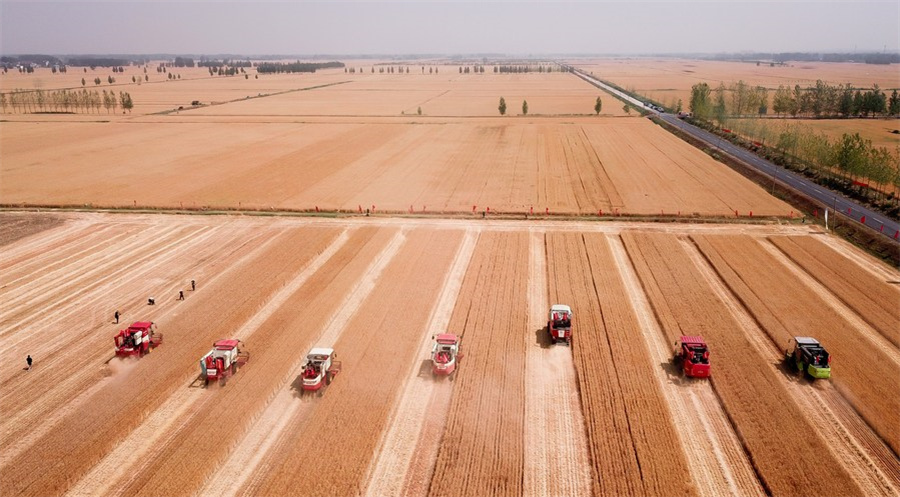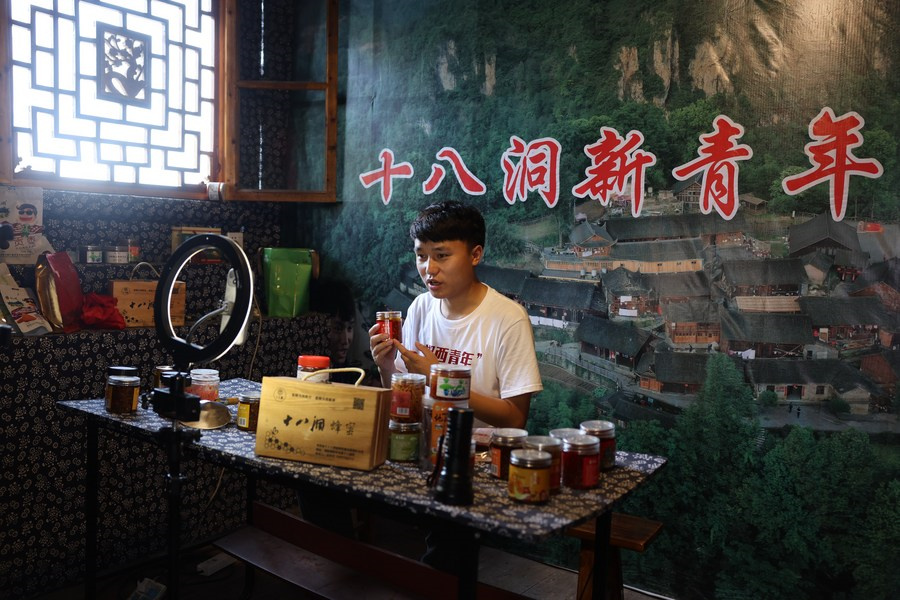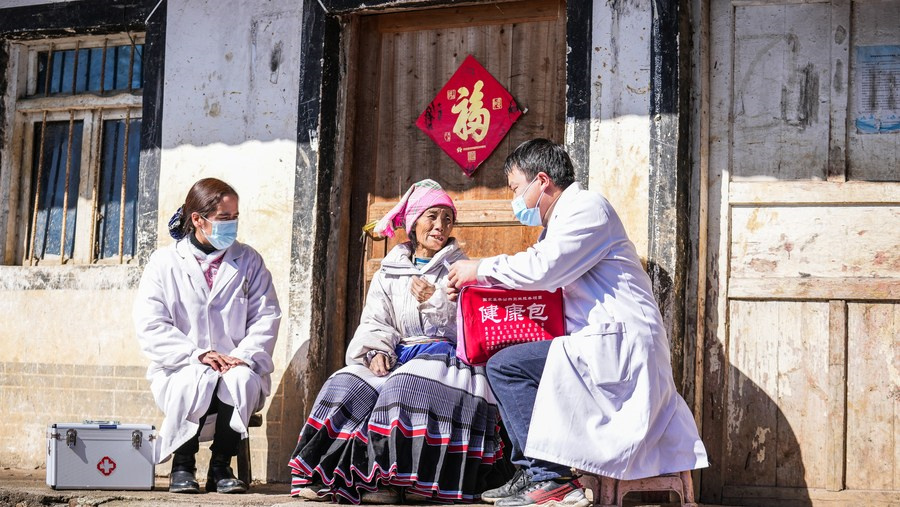China sends fresh signals on advancing rural revitalization, building agricultural strength
*China has drawn the roadmap for advancing rural revitalization across the board.
*The "No. 1 central document" for 2023 outlined nine tasks from ensuring grain supply and bolstering high-quality rural industries, to increasing farmers' incomes and developing a beautiful countryside.
*Ensuring food security is the top priority of the work to build China's strength in agriculture.
BEIJING — With a key official document released Monday, China has drawn the roadmap for advancing rural revitalization across the board, and for moving faster in building up its agricultural strength.
The "No. 1 central document" for 2023, the first policy statement released by the central authorities each year, outlined nine tasks from ensuring grain supply and bolstering high-quality rural industries, to increasing farmers' incomes and developing a beautiful countryside.
It is an "operation manual" to guide rural revitalization, Minister of Agriculture and Rural Affairs Tang Renjian said.

This aerial photo taken on June 2, 2022 shows harvesters reaping wheat in the fields in Tancheng county of Linyi city, East China's Shandong province. [Xinhua/Guo Xulei]
FOOD SECURITY, TOP PRIORITY
Ensuring food security is the top priority of the work to build China's strength in agriculture, Tang said at a press conference on Tuesday.
By the end of last year, the country's annual grain production had remained over 650 billion kg for eight consecutive years, but factors including China's large population base and its consumption upgrading drive, as well as increasingly unstable global agriculture trade, have posed challenges.
The document has underlined efforts to boost the construction of agricultural infrastructure and strengthen support for agricultural science, technology and equipment in order to ensure stable production and adequate supply of grain, and also other important agricultural products.
China will make plans for transforming all of its permanent basic farmland to high-quality farmland, invigorate its seed industry and strive to make key technological breakthroughs in agriculture, according to Tang.
To these ends, the document puts forward specific measures including piloting the comprehensive use of saline soil, advancing the construction of major water conservancy projects, and developing high-efficiency water-saving farming.
It also urged completing a national census on germplasm resources, building permanent observation stations and sites for agricultural studies, and developing advanced farm machinery.

This aerial photo taken on Sept. 29, 2022 shows the Datengxia Gorge water conservancy project under construction and the navigation lock already in use in South China's Guangxi Zhuang autonomous region. [Xinhua/Cao Yiming]
NO RETURN TO POVERTY
For a revitalized countryside, no large-scale return to poverty is a bottom line that must be guaranteed.
In 2022, the average annual income of people lifted out of poverty grew at a robust rate of 14.3 percent year on year to 14,342 yuan ($2,105), higher than the 6.3 percent increase in per capita disposable income of other rural residents.
Liu Huanxin, head of the National Rural Revitalization Administration, vowed continued efforts to prevent the re-occurrence of rural poverty.
The focus will be on promoting industries and employment to help areas and people that have just shaken off poverty to build their own growth momentum, Liu said.
The country will strive to ensure that more than 60 percent of central government subsidies for rural revitalization are used to develop local industries, and that there will be stable employment for more than 30 million people, according to the document.

Villager Shi Kang promotes village produce on a livestream in Shibadong Village in Xiangxi Tujia and Miao autonomous prefecture, Central China's Hunan province, July 2, 2022. [Xinhua/Xue Yuge]
For Sui Yikui, deputy director of the bureau of agriculture and rural affairs of Laiyang city, east China's Shandong Province, the latest central policies will serve as a boost to the city's food processing sector. "Our farmers' harvest, resulting from a whole year of hard work, will sell better."
The deep processing of agricultural products has become a key industry in Laiyang. Many local companies have become top cooking oil, condiment, and juice brands.
BEAUTIFUL COUNTRYSIDE
China's rural revitalization also means a beautiful and harmonious countryside that is desirable to live and work in.
The official document underscored solid work on improving the rural living environment and enhancing rural infrastructure in critical areas such as roads, water supply systems, and power grids, as well as reinforcing the security of rural housing. Digital technologies will be more widely used in the countryside, and intelligent agriculture will also be promoted.
Public facilities and services will be improved, with focus on epidemic prevention, old-age care, education, and healthcare, so that farmers can enjoy a modern lifestyle in rural areas, Tang said.

Medical workers send medicines to an elderly villager in Shuangtang village of Zhongshan district of Liupanshui, Southwest China's Guizhou province, Jan 6, 2023. [Xinhua/Tao Liang]
In the meantime, the introduction of a modern lifestyle will be done in a way that will not erode traditional rural features.
While modern elements are integrated into the countryside, the original rural characteristics will be preserved and highlighted, Liu said, envisioning a countryside that owns modern facilities, but without losing its local charm.
Copyright © The National Committee of the Chinese People's Political Consultative Conference.
All rights reserved. Presented by China Daily.
京ICP备08100501号-1

